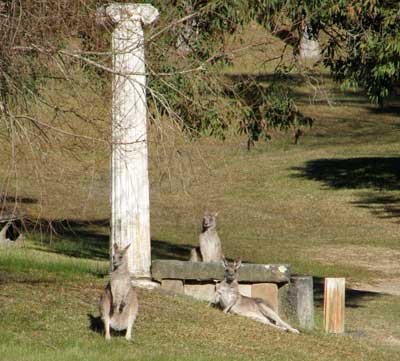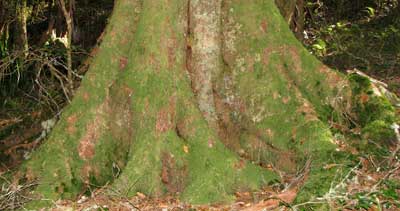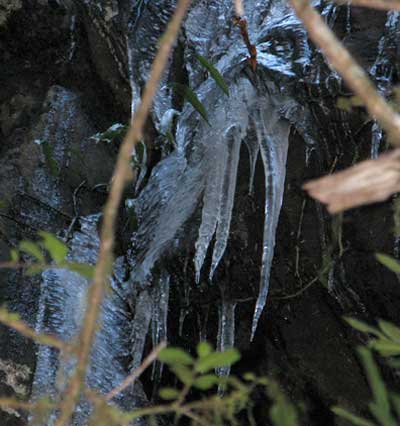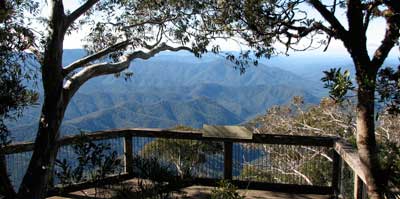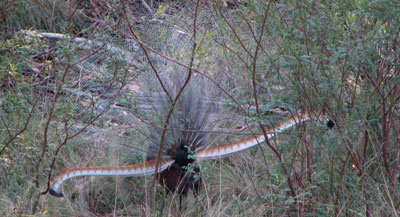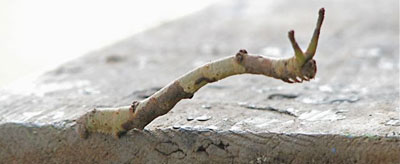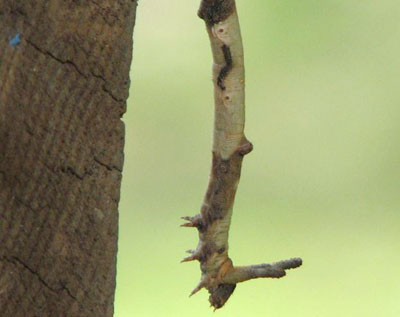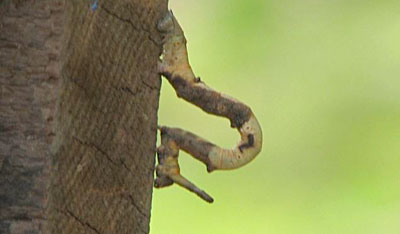On my way out the other day I noticed a bright yellow blob on the bark of a fallen tree by the gate. Must get a photo of that, I thought — but I forgot for few days.
When I returned with the camera, the bright yellow had turned orange, with older purple edges and only small oozings, awfully like custard — or worse — showed yellow.
Now I had not seen this before, but from previous investigations into another of the family, I knew it must be a slime mould, Myxomycota. They’re not fungi but tend to be lumped with them.
I had been fascinated that they move about like amoebae, reproducing into perhaps thousands of ‘daughter cells’; then, at some sort of chemical signal, they all get together and make a larger organism.
Some species make such large organisms that a horror movie, The Blob, was inspired by them.
This is one of the most common, worldwide, I had read. It’s in my fungi book as Fuligo septica, with the common name of ‘Flowers of Tan’, but the much less poetic and more apt names I found to be most common elsewhere were ‘Dog vomit mould’ or ‘Scrambled egg mould’!
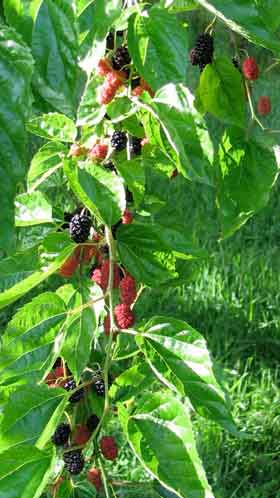 I don’t understand what’s going on in my orchard — or not going on, actually. The bower birds and the king parrots have arrived, as usual, to eat the fruit on the trees that I haven’t got around to netting, which is all of them this year.
I don’t understand what’s going on in my orchard — or not going on, actually. The bower birds and the king parrots have arrived, as usual, to eat the fruit on the trees that I haven’t got around to netting, which is all of them this year.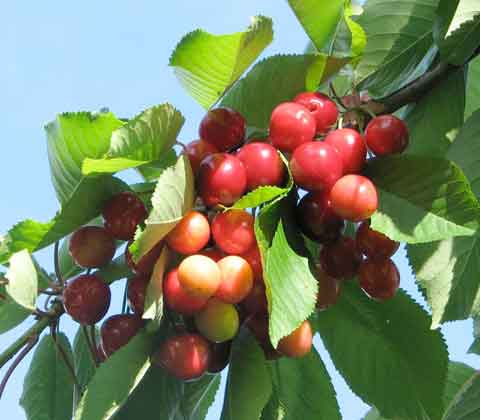
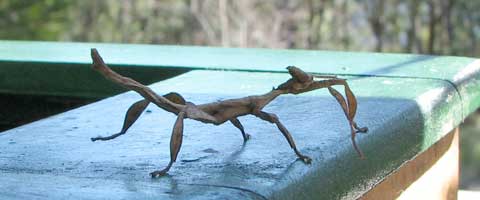
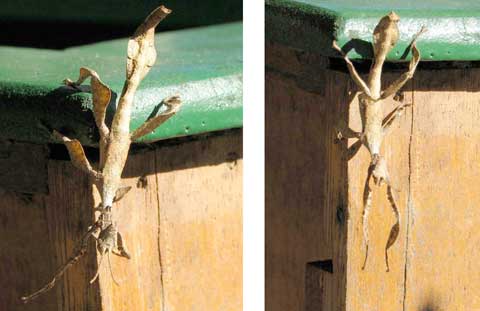
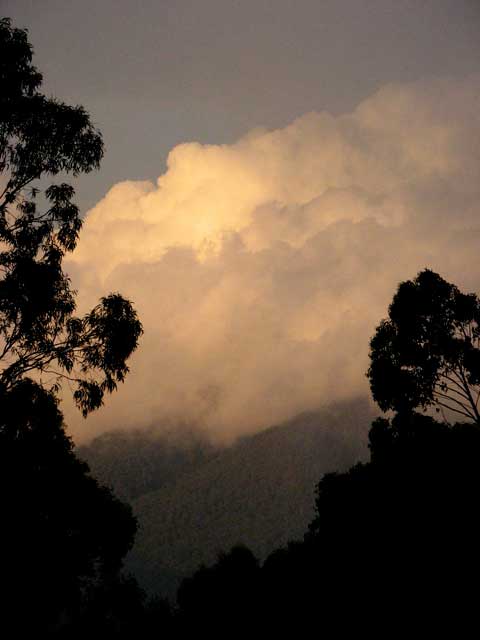 Living on a mountain, my eyes are directed as often to the skies as they are to ground level.
Living on a mountain, my eyes are directed as often to the skies as they are to ground level. Yet I have to keep my eyes on the ground as well. The constant surpises in nature here range from the sublime to the minute.
Yet I have to keep my eyes on the ground as well. The constant surpises in nature here range from the sublime to the minute.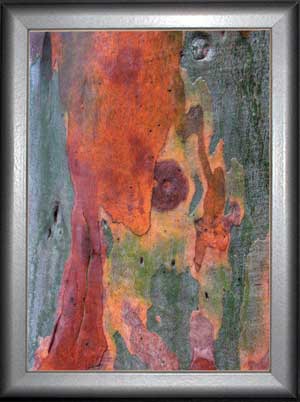 The significance of ultra-abstract art often eludes me; I might appreciate it as design and colour, but it doesn’t speak to me. I don’t warm to it, relate to it, as I can to the merely abstracted, stylised, simplified, where the origin is vaguely discernible. In the latter the artist’s treatment of it stimulates my imagination more than straight realism would.
The significance of ultra-abstract art often eludes me; I might appreciate it as design and colour, but it doesn’t speak to me. I don’t warm to it, relate to it, as I can to the merely abstracted, stylised, simplified, where the origin is vaguely discernible. In the latter the artist’s treatment of it stimulates my imagination more than straight realism would.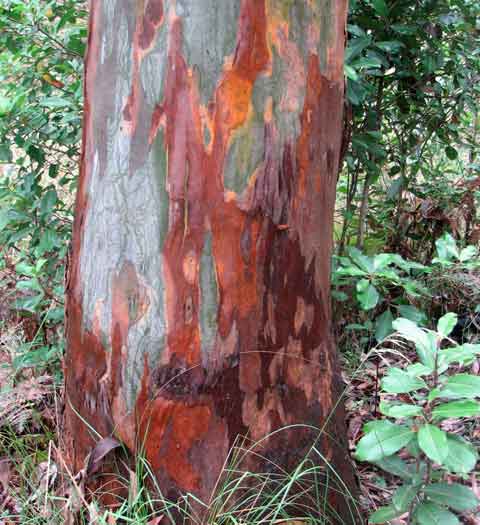 The cabin might be full, but I live in the midst of a forest that can dazzle me with temporary exhibitions of works of art like this one. The paint was fresh and bright after a spell of rain; a week later the colours will dull and fade, or flake off.
The cabin might be full, but I live in the midst of a forest that can dazzle me with temporary exhibitions of works of art like this one. The paint was fresh and bright after a spell of rain; a week later the colours will dull and fade, or flake off.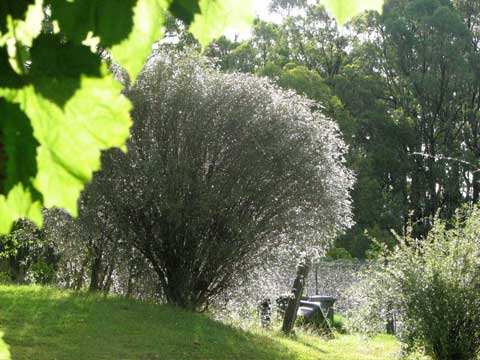 After showers, if the air is still enough, for a very brief period before the sun soaks up the raindrops — I am given diamonds.
After showers, if the air is still enough, for a very brief period before the sun soaks up the raindrops — I am given diamonds.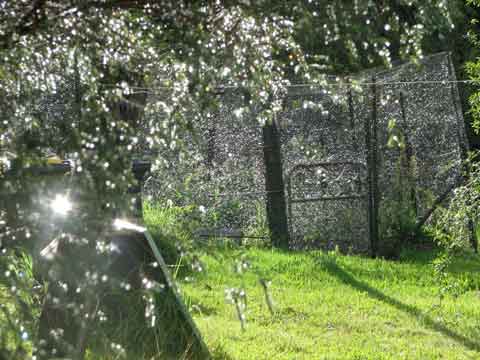 Even my hodge-podge of a vegetable garden fence is transformed; for a few minutes its strips of netting new and old, large and small, cobbled together as a snake barrier, become a thing of beauty.
Even my hodge-podge of a vegetable garden fence is transformed; for a few minutes its strips of netting new and old, large and small, cobbled together as a snake barrier, become a thing of beauty. Clouds never cease to surprise me with their inventiveness, their capacity to confuse the senses and scramble their connections to the mind.
Clouds never cease to surprise me with their inventiveness, their capacity to confuse the senses and scramble their connections to the mind. But what was it? More important than identifying it now however, was to get a photograph, in case it flew off before I could see more details.
But what was it? More important than identifying it now however, was to get a photograph, in case it flew off before I could see more details.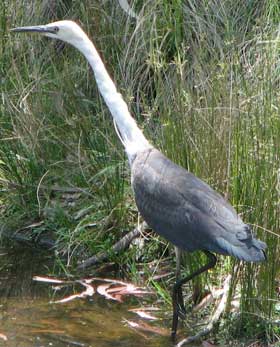 My bird book tells me it was a White-necked Heron.
My bird book tells me it was a White-necked Heron.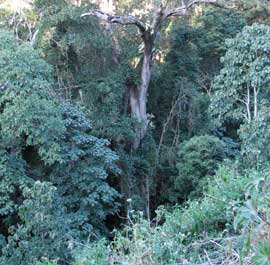 Drivng back from the Gloucester district a few weeks ago, I passed above the very steep and narrow, very special gully near Dungog where a remnant rainforest of giant trees like figs and stinging trees and white cedars stand tall and proud amidst a dense jungle of vines competing for the light.
Drivng back from the Gloucester district a few weeks ago, I passed above the very steep and narrow, very special gully near Dungog where a remnant rainforest of giant trees like figs and stinging trees and white cedars stand tall and proud amidst a dense jungle of vines competing for the light.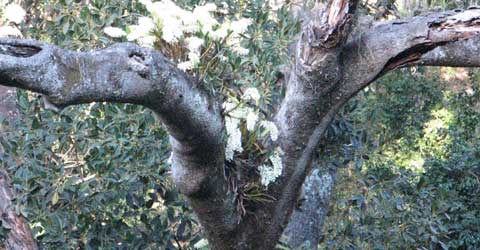 Thanks to the magic of my zoom lens, I could be sure that they were King Orchids (Dendrobium speciosum, var. hillii) Hundreds of feet up, several fat clumps of them had colonised in forks of the trunk, clinging on with their fleshy fingers as they climbed along the broad branches. A staghorn shared their treehouse.
Thanks to the magic of my zoom lens, I could be sure that they were King Orchids (Dendrobium speciosum, var. hillii) Hundreds of feet up, several fat clumps of them had colonised in forks of the trunk, clinging on with their fleshy fingers as they climbed along the broad branches. A staghorn shared their treehouse.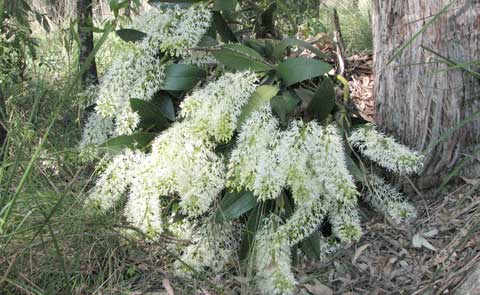 At the time, my orphaned clumps of the same orchid had been still in bud, my place being so much higher in altitude.
At the time, my orphaned clumps of the same orchid had been still in bud, my place being so much higher in altitude.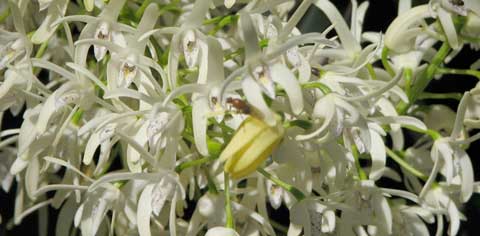
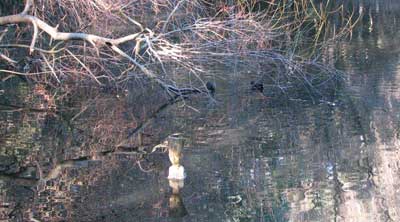
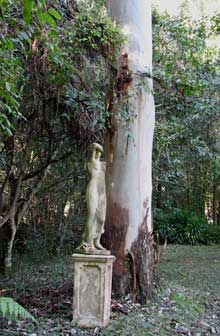 Kangaroos laze in security by Grecian columns; semi-naked ladies swoon by equally ‘palely loitering’ Blue Gums; a multitude of birds other than waterbirds are attracted to the water – such as a flock of White-headed Pigeons.
Kangaroos laze in security by Grecian columns; semi-naked ladies swoon by equally ‘palely loitering’ Blue Gums; a multitude of birds other than waterbirds are attracted to the water – such as a flock of White-headed Pigeons. 